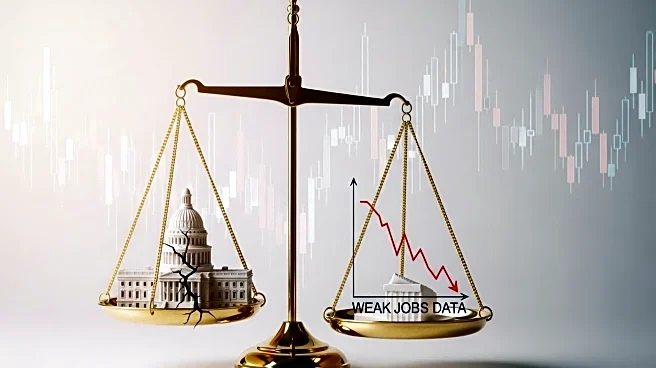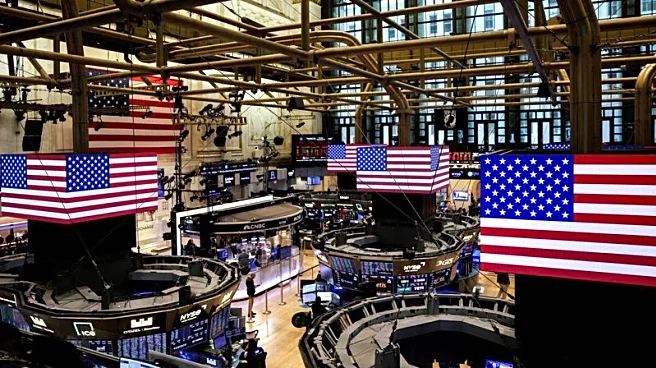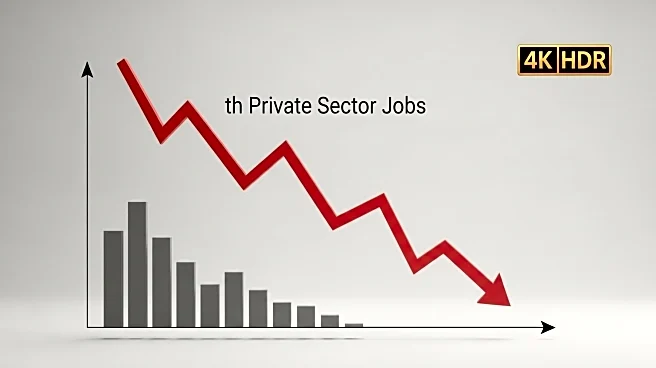What's Happening?
The Federal Reserve is anticipated to cut interest rates twice more this year, following a decrease in private payrolls by 32,000 in September, as reported by the ADP National Employment report. This development has heightened expectations for a 25-basis-point cut at the Fed's October meeting, with an 89% probability of an additional cut in December. Dallas Fed President Lorie Logan indicated that while the central bank's previous rate cut was a precaution against a sharp job market decline, the cooling has been gradual, and she is not inclined to further rate reductions at this time. The U.S. labor market's sluggishness is contributing to these expectations, alongside a government shutdown that has stalled data releases, adding to market uncertainty.
Why It's Important?
The potential rate cuts by the Federal Reserve are significant as they could influence borrowing costs for consumers and businesses, potentially stimulating economic activity. Lower interest rates generally encourage spending and investment, which can help counteract economic slowdowns. However, the gradual cooling of the job market suggests that the economy is not in immediate distress, which may lead to cautious optimism among investors. The Fed's actions will be closely watched by financial markets, as they could impact stock market performance and the broader economic outlook. Stakeholders such as businesses, investors, and policymakers will need to navigate these changes carefully to mitigate risks and capitalize on opportunities.
What's Next?
The Federal Reserve's upcoming meetings in October and December will be critical in determining the direction of U.S. monetary policy. Market participants will be closely monitoring any statements from Fed officials for indications of future rate adjustments. Additionally, the ongoing government shutdown may continue to affect data availability, complicating economic assessments. Businesses and investors will need to remain vigilant and adaptable to potential shifts in economic conditions and policy decisions. The broader implications for the U.S. economy will depend on how effectively these rate cuts stimulate growth and address labor market challenges.











